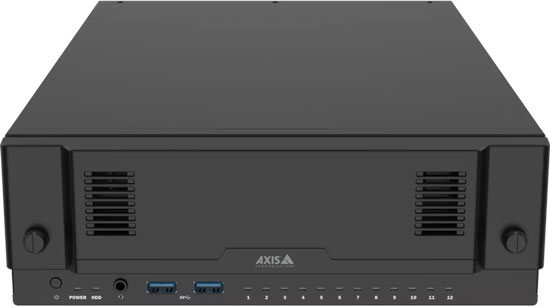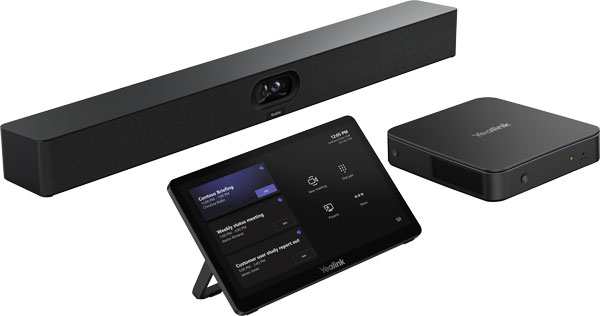As video becomes more and more important to business communications and security, the need for more efficient video processing becomes ever greater.
One of the most exciting developments of the past decade has been the release and support of ultra-efficient AV1 video codec.
We’re now seeing AV1 being supported by major video conferencing platforms, which means high-quality video with less data usage. It’s also starting to grow within the IP surveillance world, where video efficiency has serious benefits for bandwidth and storage.
In this blog, we consider the implications of AV1 for video conferencing and video surveillance.
Let’s get into it!

What Is the AV1 Video Codec?
<p? First, a little background. For the purposes of this blog, a video codec is a standard by which digital video is encoded and decoded. You can think of a video codec as the video equivalent of a JPG, PNG, or GIF image file — all different ways of encoding a digital image. The word “codec” is a combination of “coder” and “decoder” into a single word. That might help you remember what a codec is.
There are numerous video codecs in use today. Some of them are proprietary, some of them are open source.
The most common video codec is H.264 or AVC (Advanced Video Coding). This codec was first developed in 2003. It’s widely used in TV broadcasts, Blu-Ray discs, video streaming, video surveillance, and more. But there’s a lot of room to improve on AVC in terms of efficiency. It is, after all, over two decades old at this point. And it has a lot of patents and licenses that control its implementation.
Starting in 2013, H.264 was succeeded by H.265 or HEVC (High Efficiency Video Coding). HEVC is much more efficient than AVC with around 25% to 50% better data compression. HEVC also has a complicated patenting and licensing structure.
AV1 is an open-source, royalty-free video codec that has been shown to be as efficient as HEVC. It was first released in 2018 and has been slowly growing in popularity since then. The consortium that developed it did so to get rid of royalties while providing a first-class experience.
It can efficiently encode and decode 4K Ultra HD video — and even 8K video — and has been designed to be excellent for streaming video, which means it has real benefits to offer businesses for video conferencing and video security.

Jabra PanaCast 50 Video Bar System MS
What Does AV1 Mean for Video Conferencing?
Because of its data efficiency, AV1 has major implications for business communications.
When compared with traditional audio conferencing, video conferencing is a resource-intensive application: a video stream uses much more data than an audio stream.
The efficiency of AV1 means you don’t need to use as much bandwidth for an equivalent experience. So you can save on data and usage energy usage — a big win.
It also means that you could get a professional standard of video quality using less bandwidth, which means remote locations with suspect internet quality could get higher quality video feeds. As more businesses embrace hybrid workers and home office workers, AV1 could significantly improve video communications for them.
And while video conferencing platforms cap video quality at 1080p Full HD right now (we’re not aware of a widely used platform that supports 4K Ultra HD), as everyone who has upgraded from a 1080p TV to a 4K TV knows, 4K resolution makes a big, big difference. So AV1 support could enable 4K Ultra HD video conferencing soon, which is amazing.
AV1 is widely support by video conferencing platforms, including Microsoft Teams, Google Meet, Zoom, Webex, and more.
Here are a couple recent examples from the platforms themselves of AV1’s utility (external links):
- Enhancing Screen Sharing with AV1 in Microsoft Teams
- Improved video calling with faster AV1 encoding (Google)
We could add many, many more examples.

What Does AV1 Mean for Security?
As security cameras improve and video resolution increases to give you better visual evidence for protection, bandwidth and storage requirements to handle more resource-intensive video feeds become more of an issue.
But what if you could get improved video quality without significantly changing bandwidth and storage requirements? And the manufacturers could pass on the cost efficiency of a royalty-free codec to you?
You get the picture: AV1 could be a big asset for an IP video security system.
Axis has begun rolling out AV1 support for their IP cameras. Axis Camera Station Pro 6.6 adds support for AV1. As they put it in their release notes (external link), AV1 “is perfect for your cloud solutions. It makes your solution more robust, scalable, and capable of delivering real-time insights.” The codec works with their existing video efficiency technologies, including Axis Zipstream.
They’re rolling out new IP cameras like Axis Q1728 with their latest purpose-built System on a Chip — ARTPEC-9 — which enables the hardware to encode surveillance video using AV1.
It’s early days for AV1 and IP video security, but we think it’s going to become more and more common in the future, and it has the potential to be a real game changer.

What Are the Limitations of AV1?
AV1 has one big limitation right now: support.
It isn’t as widely supported as HEVC — let alone AVC, which is supported by pretty much everything. However, as we’ve shown in this blog, support for AV1 is growing steadily. Apple, for example, was slow to support it, preferring HEVC; but they’ve been rolling out support for AV1 more and more in the last couple of years, to the point that all their new devices (as far as we can tell) support it.
To our eyes, the transition to AV1 is similar to the transition to USB-C. At first, USB-C was annoying with all the dongles and adapters. But it has gradually become adapted everywhere, because it’s superior to USB-A. A USB-C plus is smaller and reversible, and a USB-C cable is capable of handling more data and power.
It also has to be said, according to some tests, AV1 still lags in terms of coding speed. As a data feed, it’s as efficient as HEVC, but it can be slower to encode and decode. However, as hardware and software implementations improve, this problem should go away. There’s no inherent reason for AV1 to be slower to code/decode than HEVC.
A successor to HEVC, currently known as H.266 or VVC (Versatile Video Coding), was published in 2020. It’s even more efficient but is much slower right now. It’s in active development and has the same licensing and royalty complexities of its forebears, AVC and HEVC. Something to watch — but for right now, not something with immediate implications for business.
And one last thing: many paragraphs ago, we used the example of different image formats — JPG, PNG, GIF — to explain the difference between video codecs. What we didn’t say then is that there are direct equivalents for the video codecs we talk about in this blog. These image formats are part of the same standards as the video formats:
- The AV1 image format is AVIF.
- The HEVC image format is HEIF (High Efficiency Image Format). You might also see the extension HEIC, which refers to the same thing.

